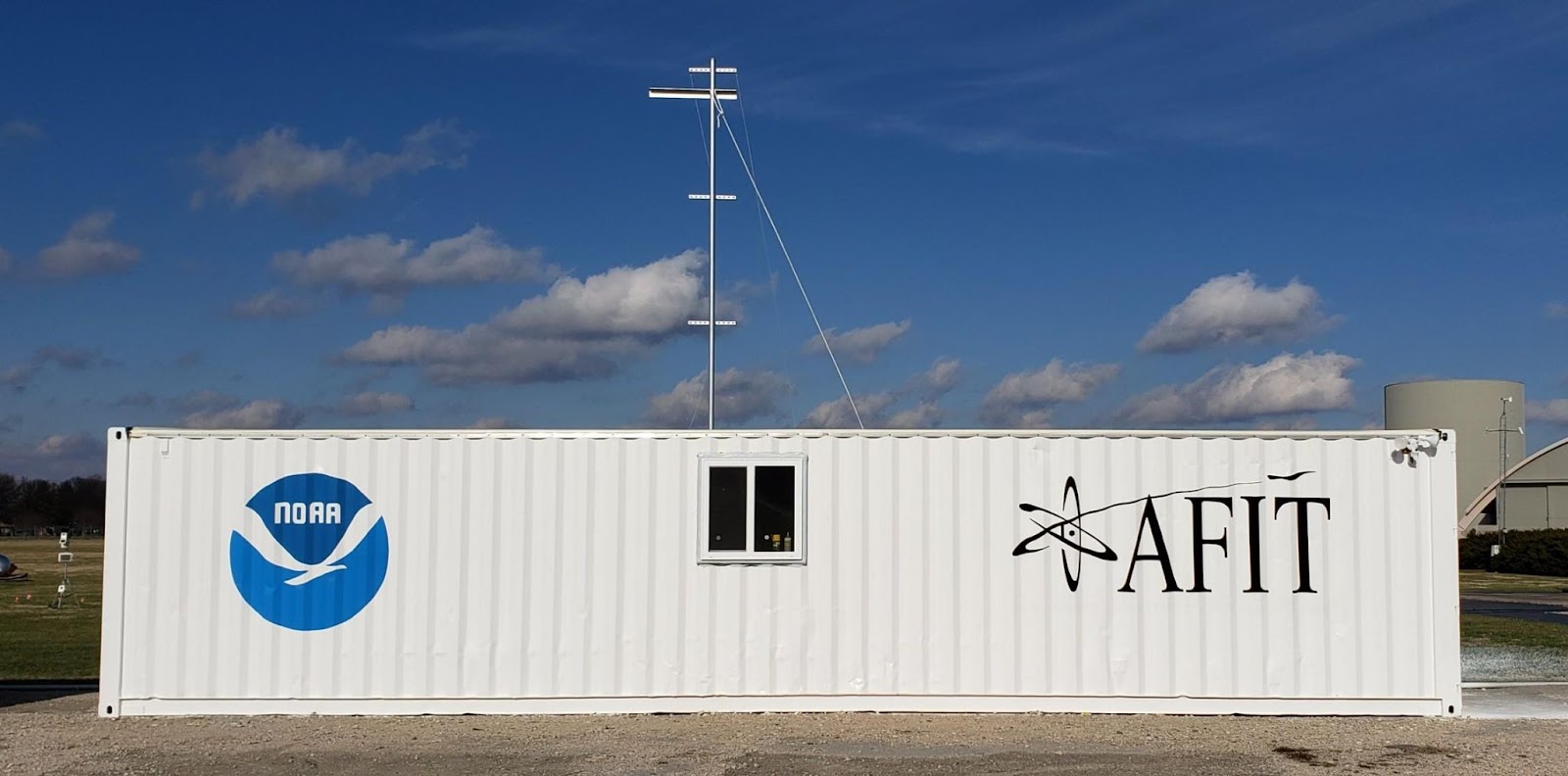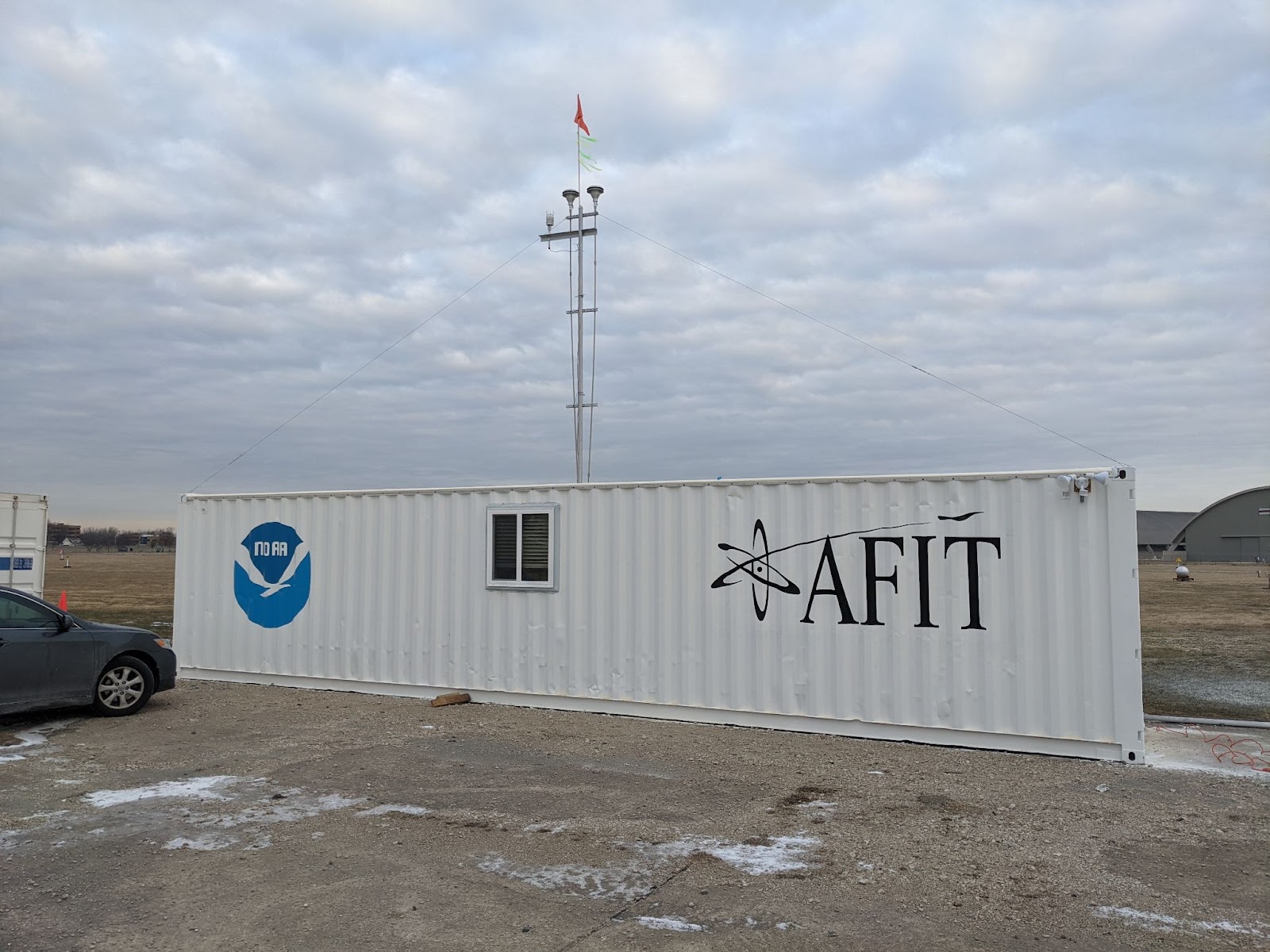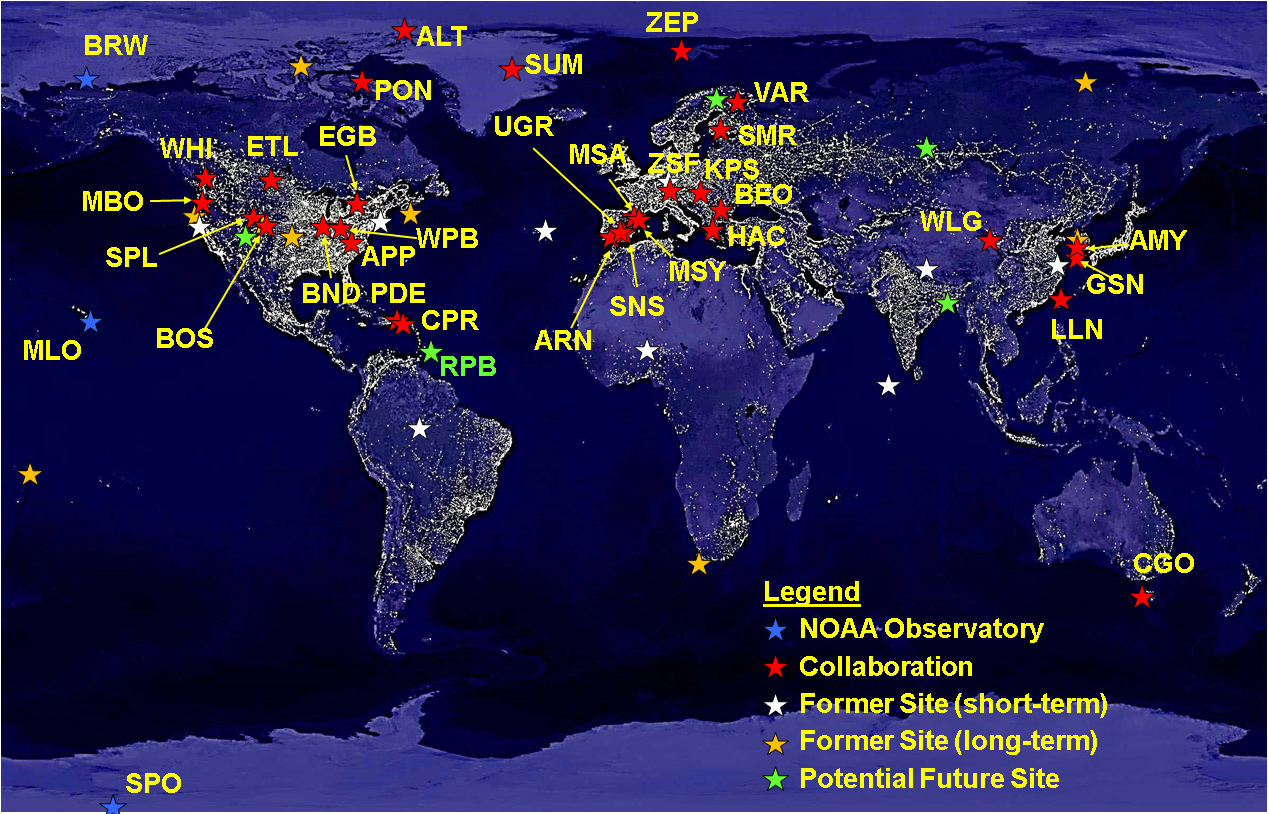A new site is installed for the NOAA Federated Aerosol Network
By Xinyi Zeng (xinyi.zeng@noaa.gov), Science Communications Specialist, Patrick Sheridan (patrick.sheridan@noaa.gov), GRAD Aerosol Program Lead, and Elisabeth Andrews (betsy.andrews@noaa.gov), CIRES Research Scientist
A new site was installed for the NOAA Federated Aerosol Network (NFAN) from January 24-28, 2022. The new station will be operated by the Air Force Institute of Technology at the Wright Patterson Air Force Base, Ohio. GML scientists Patrick Sheridan and Betsy Andrews provided technological support at the site during the installation.
Managed by our scientists, the network monitors surface in-situ aerosol properties at field sites around the world. The new station at the Wright Patterson Air Force Base complements the existing NFAN stations in the U.S. to monitor anthropogenic and natural aerosols across the continental U.S.

The NOAA Federated Aerosol Network is a partnership between NOAA Global Monitoring Laboratory and research institutes to collect aerosol data. Partners benefit from the technical support and data management software from Global Monitoring Laboratory. It also provides an economic and efficient way for NOAA to expand global observations.
Expanding the NOAA Federated Aerosol Network increases the amount of data available to characterize the variability and climate-forcing properties of different types of aerosols. Furthermore, these data will improve models that project future climate.

